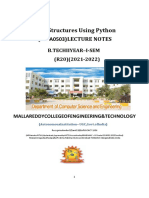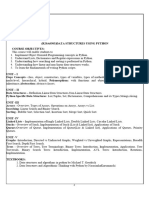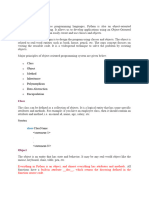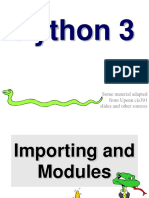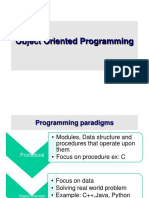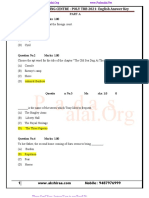0% found this document useful (0 votes)
14 views34 pagesA Level Computer 6: Introducing OOP
This document introduces Object-Oriented Programming (OOP), explaining its concepts, such as classes, instances, data hiding, and methods in Python. It emphasizes the importance of OOP for organizing complex software and improving code reuse and maintainability. The document also includes exercises and examples to illustrate the practical application of OOP principles in Python programming.
Uploaded by
rodrigo.hangzhouCopyright
© © All Rights Reserved
We take content rights seriously. If you suspect this is your content, claim it here.
Available Formats
Download as PPTX, PDF, TXT or read online on Scribd
0% found this document useful (0 votes)
14 views34 pagesA Level Computer 6: Introducing OOP
This document introduces Object-Oriented Programming (OOP), explaining its concepts, such as classes, instances, data hiding, and methods in Python. It emphasizes the importance of OOP for organizing complex software and improving code reuse and maintainability. The document also includes exercises and examples to illustrate the practical application of OOP principles in Python programming.
Uploaded by
rodrigo.hangzhouCopyright
© © All Rights Reserved
We take content rights seriously. If you suspect this is your content, claim it here.
Available Formats
Download as PPTX, PDF, TXT or read online on Scribd
/ 34

